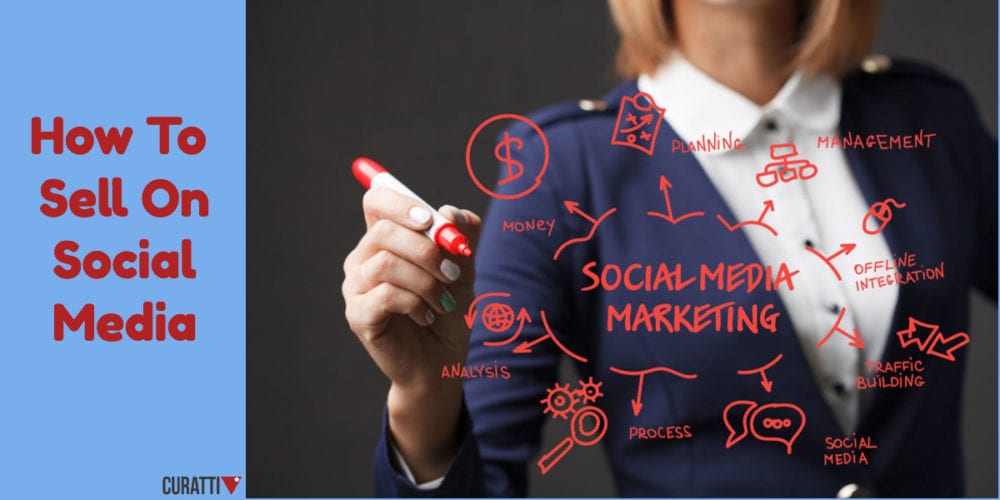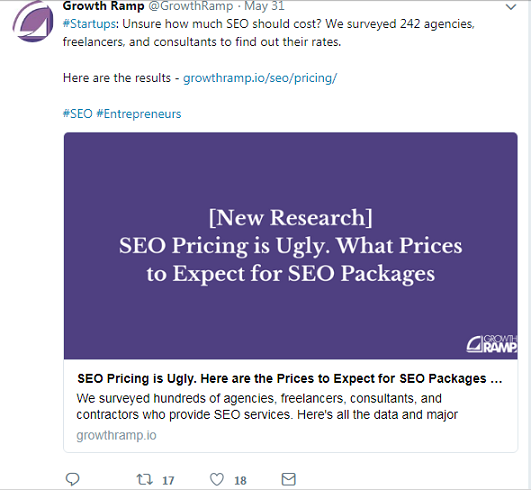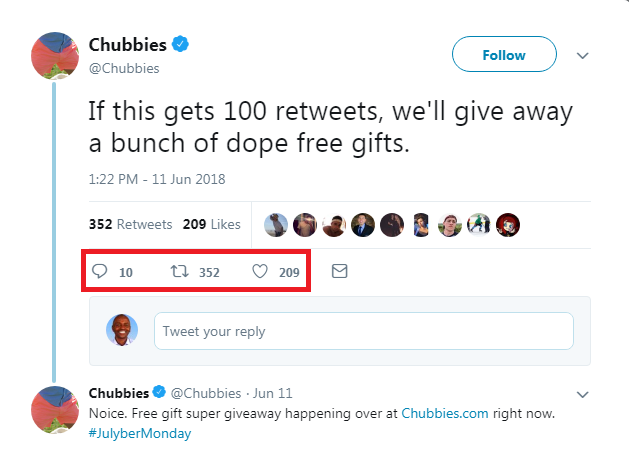How To Sell On Social Media (Without Sounding Like A Jerk)

Today’s marketing landscape is a seller’s paradise.
You can sell anything, anytime, on any channel.
In a sense, your business is never closed. People are ever-connected. They chat and interact with friends and brands on social media 24/7 using up to five different devices a day. A new omnichannel buyer journey has emerged.
Social selling, in particular, has made huge strides. More and more brands are turning to Facebook, Instagram, Twitter and other channels to promote their brands, engage with customers, increase inbound traffic, and reach out to prospective customers.
This article will explore three pitfalls brands normally fall into when selling on social media.
But first, here are some stats to invigorate you.
Startling Social Selling Stats To Inspire You
Not yet convinced about the power of social media as a marketing tool?
These social eCommerce numbers speak loud and clear about social media marketing ROI.
- Over 50% of companies that use social media marketing find that it increases revenue and sales. (Smart Insights )
- Social sellers attract 45% more opportunities than their peers, are 51% more likely to achieve quotas, and outsell their non-social counterparts 78% of the time. (LinkedIn)
- Companies with consistent social selling processes are 40% more likely to hit revenue goals than non-social sellers. (SalesForLife)
- 31% of B2B professionals said that social selling allowed them to build deeper relationships with their clients. (CSO Insights and Seismic)
- 39% of B2B professionals said social selling reduced the amount of time they had to spend researching potential leads while a third said they earned more leads with the strategy. (eMarketer)
- 31% of B2B professionals reported better relationships with clients because of social selling. (eMarketer)
- 84% of C-Level executives use social media to make purchasing choices. (Bambu)
Clearly, social selling offers an amazing opportunity for savvy marketers.
With plenty of tools to help you along the way, as the nimble Shopify POS, you can now easily set up an eCommerce store inside your target market’s favourite social media channels. People can buy from you without ever leaving the social media platform or visiting your site.
But having the right tools isn’t enough.
You need a good strategy as well. Otherwise, you’ll come across as a dumb-ass in your rush for the big bucks. Let’s look at three traps that might sabotage your success.
Temptation #1: Selling Before Serving
Brands often fall into the temptation of rushing the sale on social media.
Let’s say for instance someone follows a company on Twitter. Typically, they’re immediately hit by a deluge of sales pitches — again and again. Ugh. This makes you look like a desperate brainless brand.
Here’s the thing.
You must give before you take. Become known as a value-provider first.
Gain the trust of your audience one post at a time.
Share useful content. Answer their questions. Interact with them. Serve them — and then ask for the sale. A give-first approach makes the sale more likely because it triggers reciprocity. Done right, selling should be a continuation of the service you provide your audience.
Your pure content posts should be at least 10x more than your pitches or sales posts. Social selling is a marathon, not a sprint. Jason Quey of Growth Ramp, a marketing company that helps startups and SMBs grow faster, is a great example of the value-first approach. His Twitter stream is chock-full of valuable content.
Here he shares precious and highly useful original research which his audience appreciates as seen from the high engagement the tweet got. Serve your way into the hearts of your audience and they’ll reward you with bumper sales.
Temptation #2: Talking Without Listening
Focusing on yourself is another destructive tendency companies slide into.
They go on and on about their brand, their products, their events, their history. In the end, they make everything about themselves.
The result?
You sound like an egoistic maniac who doesn’t give a damn about other people. Hardly the way you want people to perceive your brand, is it?
Yes, you are there to advance your brand. But you go about it in a counterintuitive manner. How? By focusing on your audience’s needs. A great way to do that is to listen intently to your audience.
Social media isn’t a monologue, it’s a dialogue— a two-way interaction with your consumers. You talk, listen and then respond. Social listening helps you to keep your finger on the pulse of your consumers. This provides valuable feedback about your brand, products, industry and even competitors.
Leading sunglasses company, Blenders Eyewear are fantastic social listeners. They’re always on the lookout for customer compliments about their products. They then massage these good remarks into their ads or content.
By listening and letting their audience do the talking, Blenders Eyewear produced stellar user-generated content (UGC) that reduced their ad spend by 62% and doubled their click-through rate (CTR).
Temptation #3: Equating Connections to Customers
Because of the allure of the fast sale, clueless companies mistake connections for customers. This feeds into temptation #1.
Customers and connections aren’t the same. Here are some major differences:
- Intent – Connections may or may not buy from you in future. Customers have already bought from you before.
- Time – Connections have just connected with your brand. Customers have known you for a while.
- Exposure – Connections may not have a clue about who you are and what you do. Customers know exactly what you’re about.
- Journey – Connections are at the awareness stage of the buyer journey, while customers have already gone through your whole funnel.
It’s clear that connections are not necessarily customers. Don’t come too hard and too fast on them. You’ll scare them off.
Take time to nurture your relationship with your connections. Nudge them bit by bit through your funnel. Educate them about trends in your industry. School them about the benefits of your products. Engage them one post at a time. Eventually, they’ll buy from you when they’re ready.
Connect, converse and then convert. That’s the formula for success on social media.
Chubbies, a men’s shorts brand, know how to charm their audience.
This freebie post certainly got people talking, tweeting, and liking. It’s not all about the immediate sale. Spoiling your audience with freebies is one way of wooing your connections and building goodwill which will pay back handsomely later.
Conclusion
A sharp social marketing strategy has so many benefits.
Here are some of them.
- Increases number of leads
- Deepens relationship with customers
- Improves lead conversion rate
- Shortens the sales cycle
- Reduces contact time
- Personalized customer experiences
- Close more sales.
But to reap all these benefits, you’ve got to be on your best behaviour. Otherwise, you’ll slip up and be taken for a joker.
Over To You
Do you have any pet peeves about how people sell on social? Please share in the comments section, below. Thanks!
You may also want to read: How to Be Successful in Social Selling
Featured image: Copyright: ‘https://www.123rf.com/profile_putilich‘ / 123RF Stock Photo
Qhubekani Nyathi
Latest posts by Qhubekani Nyathi (see all)
- How To Increase Landing Page Conversions (13 Pro Tips) - May 6, 2020
- 7 Simple eCommerce SEO Tips To Help You Rank And Sell More - March 5, 2020
- 9 Easy Email Hacks To Increase Open Rates - February 27, 2019




